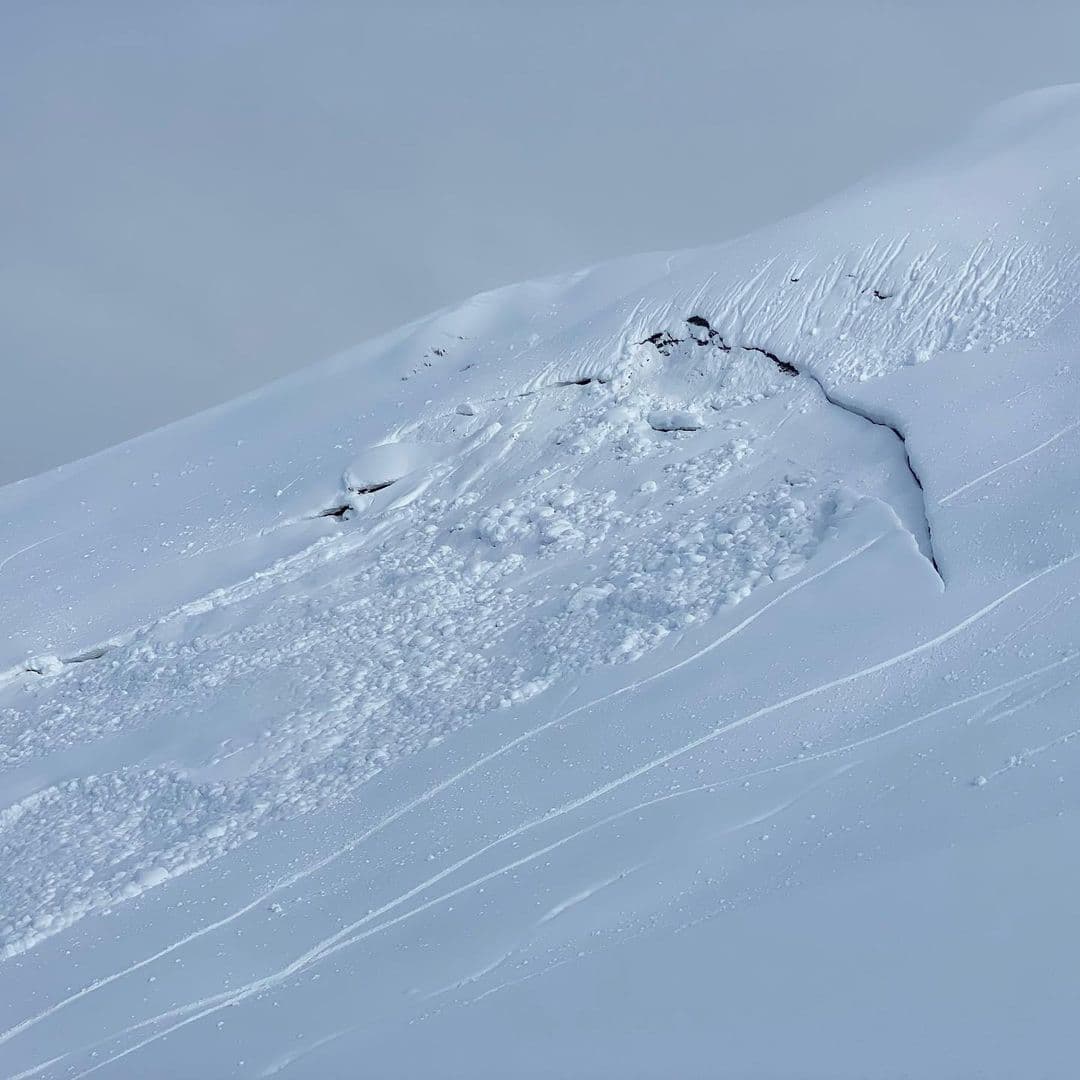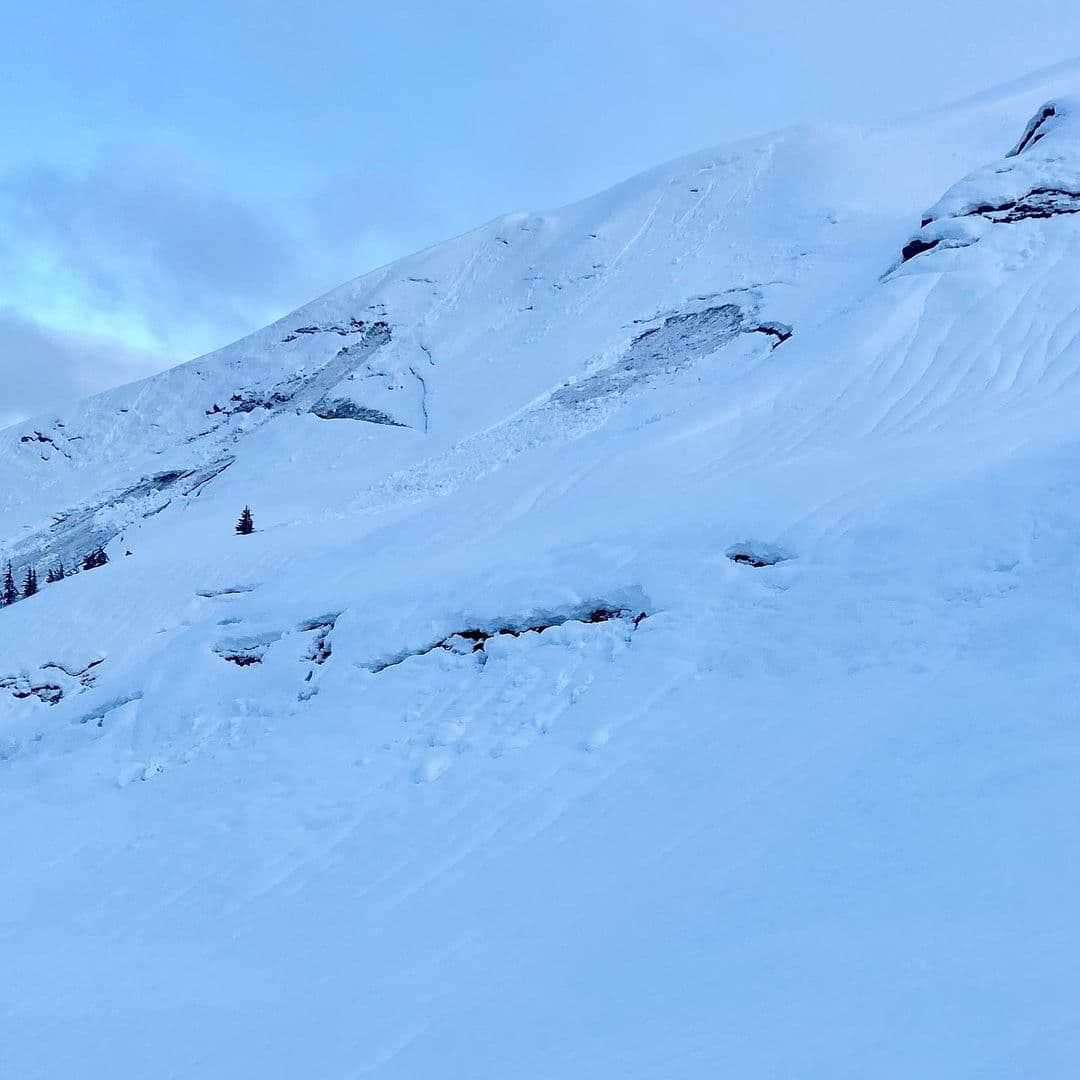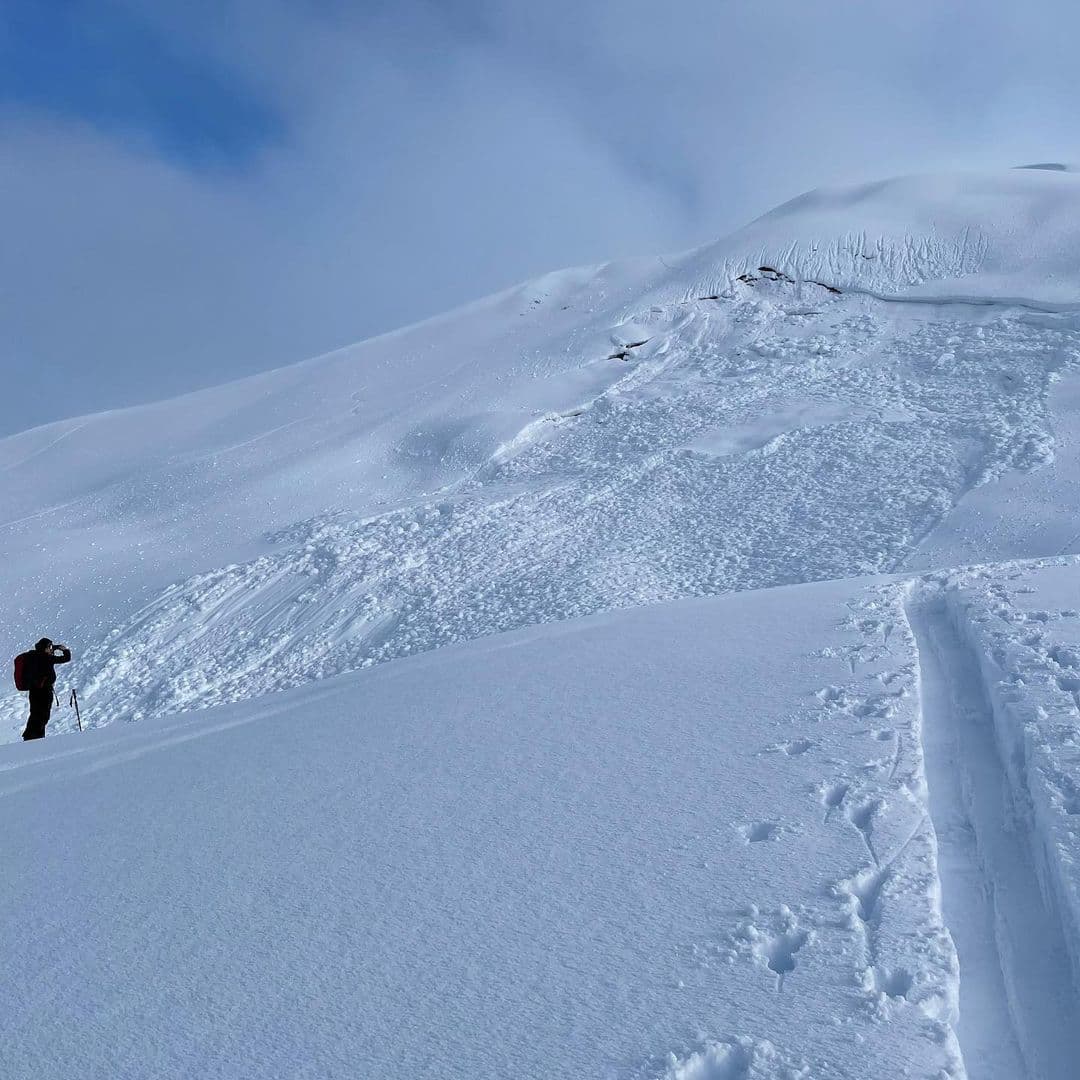View this post on Instagram
A conditions report here from the Chugach National Forest Avalanche Center in Alaska. The snowpack at 3,000-feet is already pretty deep for October, with multiple layers, including rain. However, it is quite wet with no weaknesses (although they may exist at higher alititudes.)
However, there is evidence of glide avalanches and glide cracks everywhere. According to avalanche.org, glide occurs when the entire snowpack slowly slides as a unit on the ground. Glide avalanches can be composed of wet, moist, or almost entirely dry snow and pose a very difficult hazard to forecast. They are often preceded by glide cracks (full depth cracks in the snowpack), though the time between the appearance of a crack and an avalanche can vary between seconds and months.
Glide avalanches are unlikely to be triggered by a person, and many glide cracks don’t result in avalanches. That said, it’s not smart to muck around on or below visible glide cracks.
Conditions report from Tincan at Turnagain Pass yesterday (Oct 24). Patches of snow at the parking lot, 4-5’ at 3,000’. Breakable crust on surface from 1,500-2,500’ ish… No weaknesses seen within snowpack at 3,200’ (start zone elevation). But, glide avalanches and glide cracks everywhere! These are avalanches where the whole snowpack oozes slowly down a slope then unpredictably releases on the ground. Easy to see the cracks, easy to avoid being under them. Check out the pics and vid here. Cross your fingers the next weather system later this week is colder…. Last week rain fell up to 2,500 and higher at times.
– Chugach National Forest Avalanche Center


